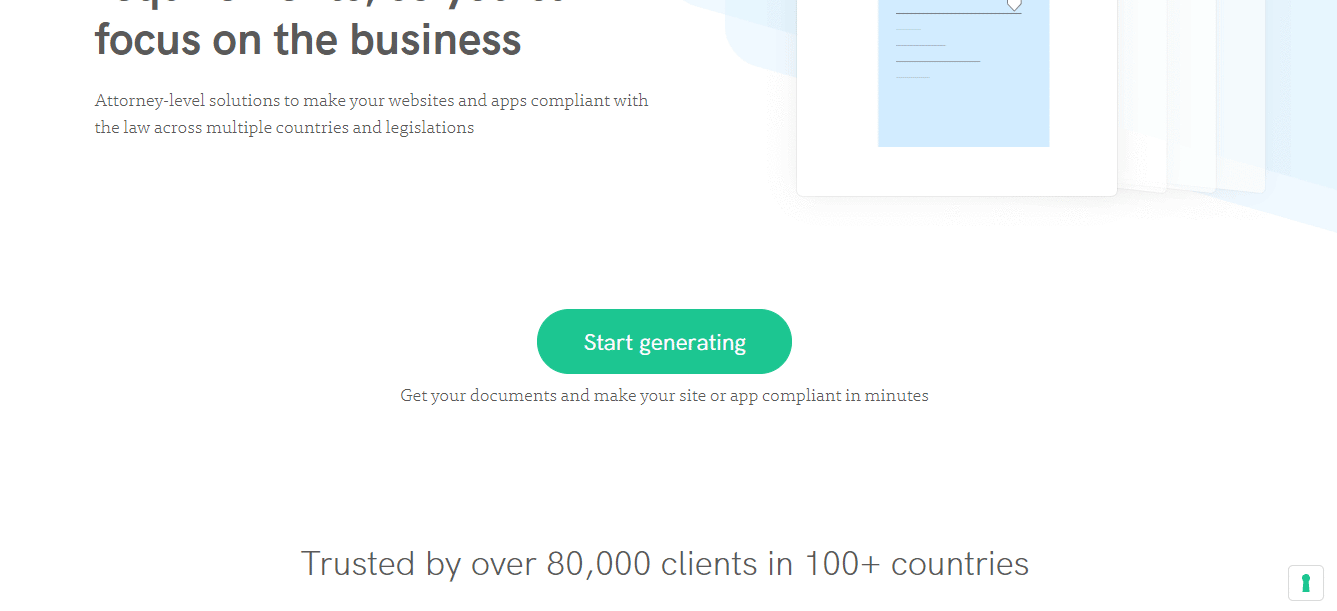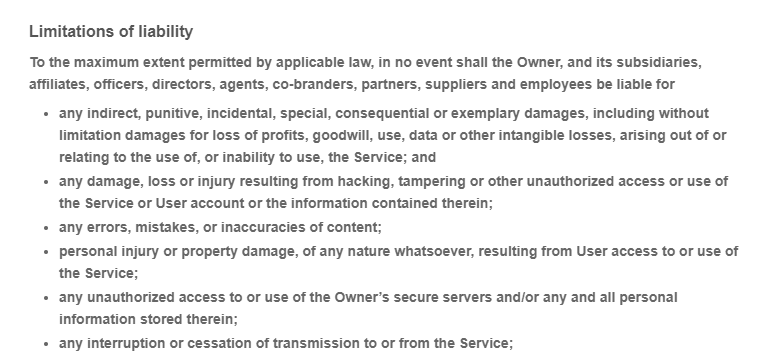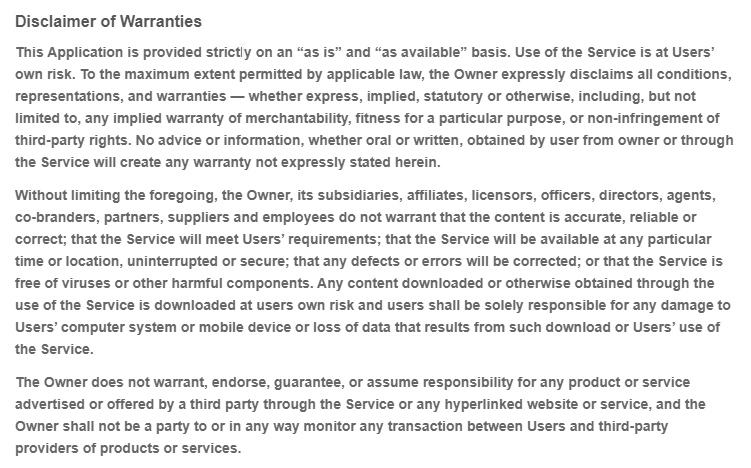What are disclaimers? Why are they so important when it comes to protecting your business? What should a disclaimer say? In this post, we explain the importance of disclaimers and give you some practical disclaimer examples.

Disclaimers are statements that can help protect you and your business. They help you limit your responsibility, define the conditions under which you may be held liable, or protect your content from misuse.
Legal disclaimers are pretty important because they, along with a solid set of terms and conditions, can act as your first layer of legal protection: if you clearly define your conditions and rules (within applicable law, of course), it may help reduce your responsibility, in case something bad would happen.
For example, if you’ve ever looked up your symptoms on the internet (yes, we know you did!), you’ve most certainly seen that every website or blog about health has a disclaimer in place where they state that the information they provide can’t be taken as a diagnosis. In this way, they are limiting their responsibility.
That’s how disclaimers work.
The first thing you should know is that there are lots of different disclaimers for different purposes: the limitation of liability clause defines the conditions under which you may be held liable; the disclaimer of warranty protects business owners from the malfunction of their product or service; disclaimers on content limit your responsibility in relation to your content, etc.
So, a good way to start may be asking yourself: “What could possibly go wrong?”.
The answer to this question will vary from individual to individual, from business to business; that’s why disclaimers are so specific!
Once you’ve identified what could cause a problem for your business, you’ll be able to select the right disclaimers for your situation.
Writing a legally sound disclaimer clause may be difficult if you don’t have legal expertise.
However, there’s a general rule of thumb for writing a standard disclaimer:

Now that you have your disclaimers, the next question would be: where do you put them on your website?
As mentioned above, one of the best ways to ensure that your disclaimers are seen as legally valid is to ensure that users can actually see and access them.
In general, best practice is to:
Terms and Conditions are a legally binding document, a contract between you and your users. They’re the perfect place to add your disclaimers because terms usually define your website or app’s rules. This is how we’ve done it!

You can learn more about Terms and Conditions here.
Now let’s look at some examples of the most common types of disclaimers, to have a clearer idea of what we’ve described so far.
The limitation of liability clause defines the conditions under which you may be held liable.

The disclaimer of warranty protects business owners from the malfunction of their product or service, releasing them from legal liabilities. This disclaimer is essential for e-commerce stores.

If you share information that could be misinterpreted, misused or could potentially cause harm, you can add disclaimers that limit your responsibility in relation to your content. Take, for example, this excerpt taken from the web:
“The contents of this website, such as text, graphics, images, and other material contained on the WebMD Site (“Content”) are for informational purposes only. The Content is not intended to be a substitute for professional medical advice, diagnosis, or treatment.”
Disclaimers on content can also include copyright disclaimers. A copyright disclaimer is a simple notice stating your name, the date, and a statement of rights. Its purpose is to inform people that the original content you’ve created belongs to you because you are the author.
It’s usually added to the website’s footer, like in this disclaimer sample by Amazon Prime:

Under the US Copyright Law, there are cases when you can use copyrighted content without breaching copyright. This is called “Fair Use” and Article 107 states that you can use copyrighted content for the following reasons:
If you fall into one of these categories, a Fair Use disclaimer can help you demonstrate that you’re not violating U.S. copyright law. For example, take a look at the Fair Use disclaimer text on the Louisiana Office of Student Financial Assistance website:

So while the above may be true for the U.S., it may not apply to other countries. Learn more in our dedicated guide about copyright disclaimers.
If your site contains content that some people may find harmful or triggering, it’s better to disclose it. That way, people who visit your site will know in advance and may choose not to engage with your content.
Examples of sensitive content that may need a disclaimer warning are:
Take a look at this legal disclaimer example by the London Museum:

A No Responsibility Disclaimer is similar to the Limitation of Liability Clause. It’s used to limit your responsibility in certain cases, for example, if your product or service isn’t working as intended, or if damages occur as a consequence of your actions. In other words, it can help you protect yourself when things go wrong.

A “views expressed” disclaimer is a statement that says the opinions shared in a message or piece of content belong to the person speaking or writing, not to their employer or any group they’re part of. It’s often used to protect the person or organization from being held responsible for any opinions that might be controversial or personal.
A views expressed disclaimer statement can read something like this:
The views expressed in this article are those of the author and do not necessarily reflect the views of [Company Name] or its affiliates.

An advertising disclosure is used to inform an audience when content includes paid promotions, sponsorships, or any form of advertising. It’s often required by laws and regulations that protect consumers and avoid misleading practices. For example, the FTC Influencer Guidelines require influencers to share any sponsorships in their posts – using hashtags like #sponsored or #ad.
An email disclaimer is a statement included at the bottom of an email that explains how recipients should use the content of the email. For example, it can clarify the sender’s intent, provide information on the confidentiality of the content, or include legal notices. An email disclaimer sample can read something like this:
This email and any attached documents are intended for the named recipient(s) only. It may contain confidential, proprietary, or legally privileged information. Unauthorized reading, copying, distribution, or disclosure is strictly prohibited. If you received this email in error, please notify the sender immediately and delete it from your system.
iubenda can help you protect your business through disclaimers.
Our Terms and Conditions Generator allows you to easily include your professional disclaimers in your website.
If you’re not sure what disclaimers you need, the built-in quiz and tool tips will guide you to ensure a professional setup tailor-made for you. Try it risk-free for 14 days.
The solution to draft, update and maintain your Terms and Conditions. Optimised for eCommerce, marketplace, SaaS, apps & more.